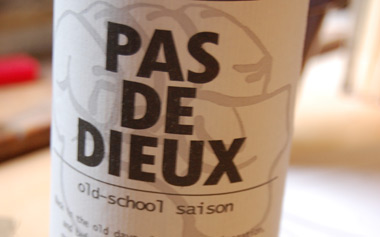These days, many breweries stock the shelves with seasonal varieties almost as frequently as Hallmark updates their greeting card offerings or my neighbors change the colorful flag at their front door, reminding me most recently that Halloween is only two months away.
Of course this is done to build demand—act now before this beer disappears!—but the practice has obscured the original reason and value behind the custom.
Before marketing firms hijacked them and forced them to breed, there used to be only four seasons. Instead of each occasion being represented by a costumed character or particular dish, old-fashioned seasons were actually calculated by celestial events that corresponded with meteorological events on the Earth. (I know: incredible!)
The seasonal beers of yore weren’t produced to work with an advertising calendar, but they appeared when the ingredients that went into them were at their freshest or the demand for a particular beer was the greatest.
Although many package stores are currently in the process of replacing the light, lemon-scented beers with pumpkin- and spice-flavored brews, there are some breweries that have attempted to do things old-school again. This summer I tried and enjoyed three beers brewed in New England that attempt to put the seasons back on track.
*
The first serious seasonal I tried this summer came from Peak Brewing in Portland, Maine, and it came with the witty name Weiss Principal Ale. At its heart the beer is a German-style Hefe-Weisse—a light ale made with wheat—but as the text on the bottle explains, the final result is “the international love child” between the German beer and an American Double IPA.
To be honest, such a coupling did not sound wholesome to me at first. Why take a light, easy drinking ale and knock it over the head with booze and hops? I also eyed the unopened bottle suspiciously: traces of yeast appeared to stain the inside of the neck and the concoction swirled with sediment. Typically, I like my beers unfiltered and I’m comforted by a bit of sediment at the bottom, but it looked like a hurricane of the stuff was swirling inside the Weiss Principal.
I shared the 22-ounce beer with a friend, and, being the gentleman that I am, I poured him a glass first. We were both impressed by the rich orange color and thick white head, and my companion enthused at the rich but balanced flavor.
When I poured my glass, though, I got yellow milk. The yeast was so thick at the bottom of the bottle, the consistency of the drink changed. Bragging to my friend that I wasn’t afraid of a little yeast, I joined him in his drinking, but while he finished with only good things to say about the beer, my ambivalence culminated with a late-night emergency trip to the bathroom.
Smuttynose Brewing adopted a similar approach to its new seasonal, Homunculus, as Peak did to its Weiss—taking a traditional European brew and trying to infuse it with some American IPA sensibilities—but so far I haven’t experienced any ill effects from that peculiar brew.
In this case, Smuttynose started with an already hoppy Belgian triple as the base beer and experimented by adding a Chimay-style yeast with a strong, fruity flavor. The less erratic pairing has a decidedly more unified flavor and presentation. Dark golden, it offers a strong burst of hot, almost bourbon-like flavor with an exceptionally smooth finish. At almost 10 percent alcohol, though, it may not have been the right fit for sipping on a patio in the sun.
*
Traditionally, summer beers, or saisons, were low in alcohol, as they were brewed to be consumed by farmhands laboring in the fields. The beer had a practical purpose: before refrigeration or drinking water available from the tap, these beers were what kept the workers hydrated.
Instead of going only halfway toward replicating summer beers of the past, Will Shelton of the Valley’s High & Mighty Brewing has gone all the way. His Pas De Dieux is an exceptional old-school saison. While it’s pleasantly hoppy, the French yeast adds a hint of pepper to the flavor which heightens the sweetness of the malt.
In a recent interview with the Advocate, Shelton explained the name was a play on the French dance term ‘pas de deux.’ For him, he said, like a two-step, brewing has always been an interplay between the malt and the hops, and beers with high alcohol content, he finds, smother this relationship.
He came upon the beer by making his regular ale, Beer of the Gods, with French and Belgian ingredients instead of the regular German ones. After a trial, he was so taken with the results that he brewed a bigger batch. Since it wasn’t “of the Gods,” he dubbed the new beer Pas De Dieux (not of the Gods).
The delicious beer began appearing on the shelves and on tap across the region in July; the 40 barrels he brewed are nearly gone. After depleting the stock at one local package store, I began working on another. Shelton says only one keg remains, which he said will likely be consumed before this is published.
If you’re not able to find some of your own, don’t despair. This fall, he promises two more seasonal ales, again with esoteric names, and like Pas De Dieux, they’ll likely be calibrated by the celestial calendar rather than the publicist’s.



